Webb Objects Tour
Sketches & Video Capture images of the Webb Society Objects!
created: 10-17-2013.
revised: 10-23-2024.

One of the best known British astronomers from the 19th century is Reverend Thomas William Webb (1807 – 1885).
While T. W. Webb's career was primarily as a clergyman of the Anglican Church, he pursued astronomical observations in his spare time.
On church grounds, he built a small canvas and wood observatory that was home to a 3.7" refractor and a 9.5" reflector.
In 1859, he published an astronomical observing book for the amateur astronomer titled: "Celestial Objects for Common Telescopes".
Later, in 1917, during revisions for the sixth edition by Reverend T.E. Espin, the book was split into two volumes as detailed below.
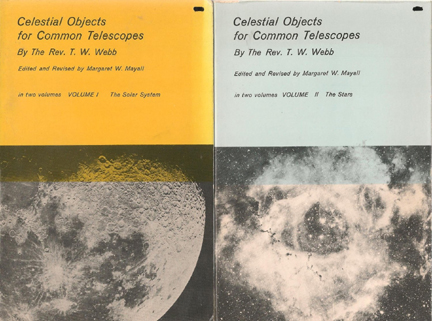

Webb's book was written as a guide for the amateur astronomer, containing instructions on the use of a telescope as well as detailed descriptions of what could be observed with it.
Over the years it became a classic and was considered the standard observing guide of amateur astronomers worldwide well into the middle of the 20th century.
The first volume dealt with how to use a telescope, and observing the planets and other solar system objects.
Volume-two concerned observing deep-sky objects consisting of double stars, clusters, and nebulae that could be found in each constellation.
With volume-two of his book, Webb lists a number of bright 'deep-sky' objects visible with small amateur telescopes.
The Webb Society was founded and named in honour of Rev T.W. Webb.
It's goal is to encourage amateur observations of double stars and 'deep-sky' objects such as star-clusters, nebulae, and galaxies.
They've taken Webb's original guide and have broken/expanded it into eight individual observing guides covering various topics.
Volume-1 covers Double Stars.
Volume-2 covers Planetary and Gaseous Nebula.
Volume-3 covers Open and Globular Star Clusters.
Volume-4 covers Galaxies.
Volume-5 covers Clusters of Galaxies.
Volume-6 covers Anonymous Galaxies.
Volume-7 covers the Southern Sky.
Volume-8 covers Variable Stars.
"Observing the Webb Society Objects"
"Webb Society Planetary Nebula"
"Webb Society Gaseous Nebula"
"Webb Society Open Clusters"
"Webb Society Globular Clusters"
"Webb Society Galaxies"
The Father of Amateur Astronomy! PDF
The Rev T.W. Webb is credited with a number of co-discoveries of deep-sky objects,
several of which, in his logbook notes, were the first recorded observations of un-named star-cluster discoveries
that have only recently been identified as having been first seen by Webb.
These include the following:
IC 4756 (open cluster in Serpens) - 08/07/2010 - 8" SCT f6.3, StellaCam-II 8 seconds
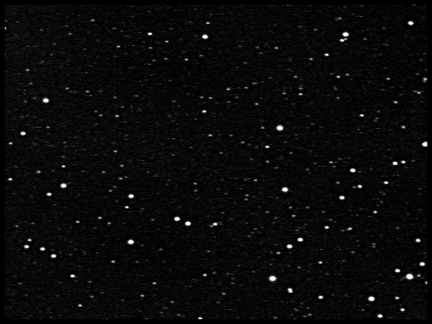
Stock-2 (open cluster in Cassiopeia) - 11/01/2013 - 50mm Refractor, StellaCam-II @ 8 seconds

Stock-23 (open cluster in Camelopardalis) - 08/17/2014 - 8" SCT f5, StellaCam-3 @ 15 seconds

Trumpler-2 (open cluster in Perseus) - 12/03/1997 - 8" Dob f4.5, 32mm 28x
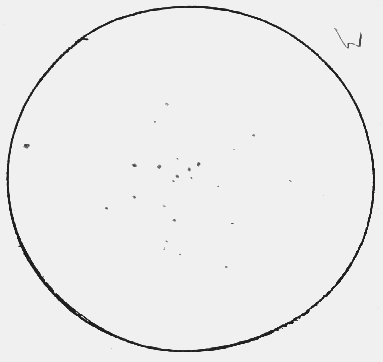
Stephenson-1 (open cluster in Lyra)
08/03/1992 - 8" Dob f4.5, 24mm 38x
- 08/03/2013 - 8" SCT f5, StellaCam-3 8 seconds
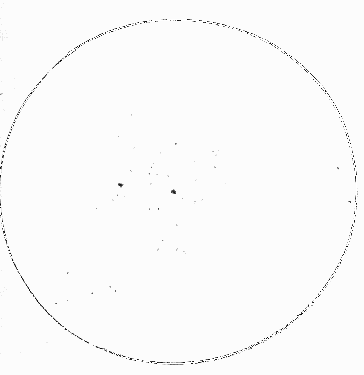
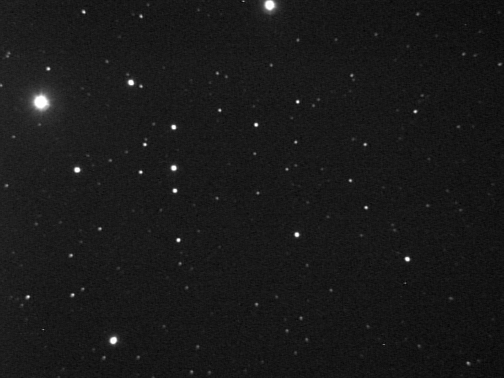
The most famous co-discovery by Webb is the planetary nebula NGC7027 in Cygnus, which he made in November 1879.
Webb promptly communicated his new object to the astronomical community, where the nebula was widely studied and reported upon.
It was not until later in the spring of 1890 that it was determined that this nebula had actually been discovered a year earlier
by french astronomer Edouard Stephan. For some years afterwards this object was credited to both, but eventually Webb's name was dropped from use.
NGC7027 (planetary nebula in Cygnus) - 09/02/2013 - 6" RC f5, StellaCam-3 @ 25 seconds
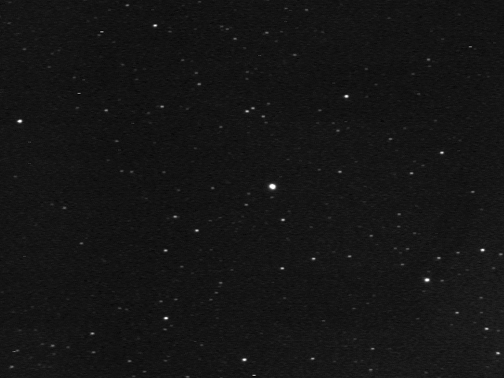
Finally, there's a little know asterism called "Webb's Wreath" located in Hercules. It was first mentioned in the 4th edition (1881) of Thomas Webb’s observing guide “Celestial Objects for Common Telescopes.”
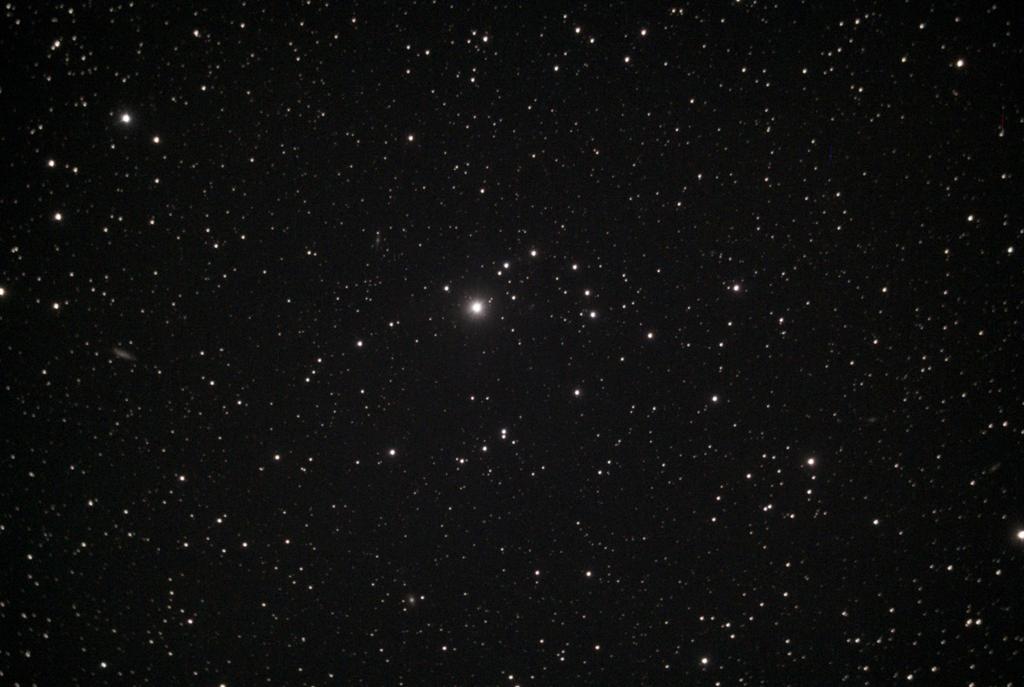
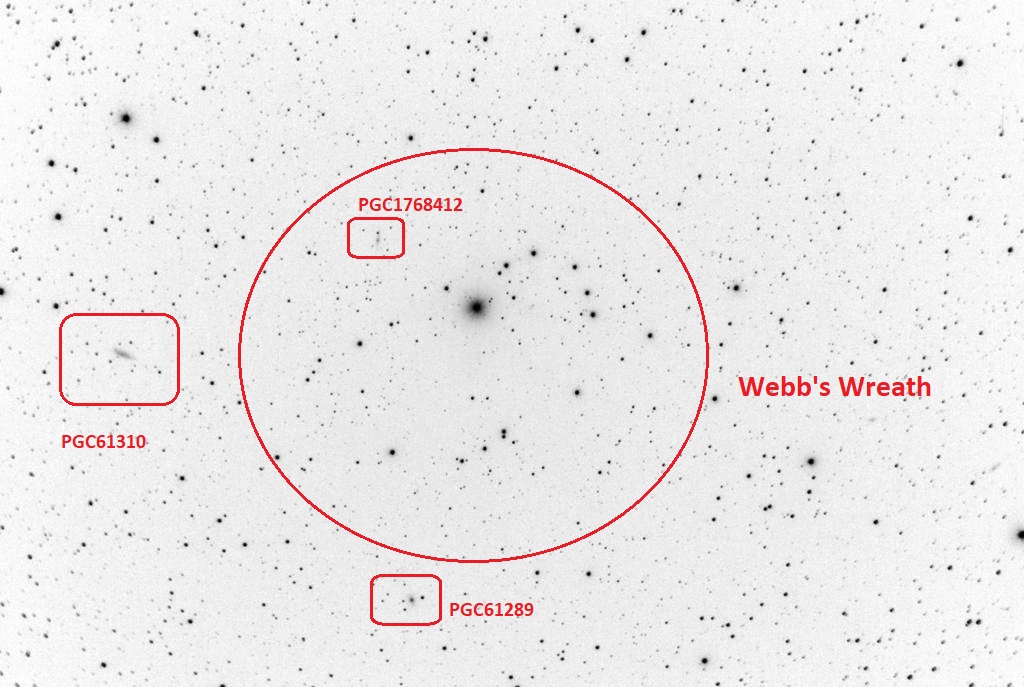
8” Celestron SCT optical tube @ f6.3 with a ZWO ASI294MC Pro camera and L-Pro filter on an Atlas EQ GEM mount: 15 second subs livestacked for 6 minutes: (And a negative showing the small nearby PGC galaxies)
credits: "Observing and Cataloguing Nebula and Star Clusters" - Wolfgang Steinicke
Neat links:
Webb Society
Larry's home webportal
You may E-mail me at:
lsmch@comcast.net
This is it. Hope you enjoyed the visit. Come again soon!










